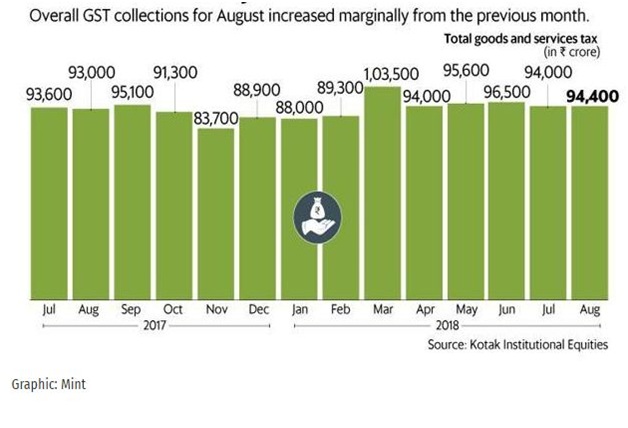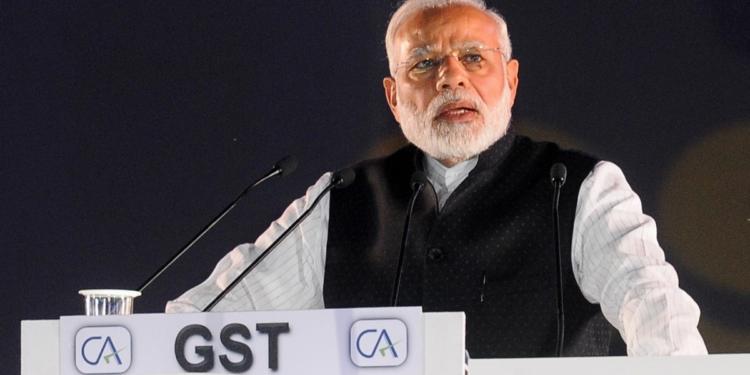GST collection crossed the mark of 1 Lakh crore in October 2018. Since the implementation of indirect taxation law in July, 2017, this is the second time that the GST collections have crossed 1 Lakh crore mark. Last time in April 2018 only, the collections went up to 1 Lakh crore. In April, the GST Collection rose because taxpayers paid taxes which were due since last year. But this year, the collections rose due to the increase in consumption. “GST collections for October 2018 have crossed 1 lakh crore. The success of the GST is lower rates, lesser evasion, higher compliance, only one tax and negligible interference by taxation authorities,” tweeted Finance minister Arun Jaitley.

In July this year, the government reduced taxes on many white goods, consumed by the middle class, such as refrigerators, washing machines etc. GST council expected that reduction in taxes will increase the consumption of these goods and in this way the drop in collections due to tax reduction had to be compensated. But the collection moved southwards as the consumption of these white goods did not increase as per government’s expectations. However, with festive season nearing, the impact of tax reduction will be visible. As the festive season continues in the months of November and December, the collection is expected to move northwards.
The GST collection also increased due to various anti-tax evasion measures implemented by the government from October, including e-way bill and mandatory TCS (tax collection at source) requirement for e-commerce companies. Overall, the macroeconomic conditions of the country has improved in the recent days after a short deterioration in the last month. “Improvement in GST collections, along with the rupee’s appreciation by 50 paise, crude prices below 75% a barrel, and bond yields moderating to 7.8%, are good news for the Indian economy, said Subhash Chandra Garg, secretary, department of economic affairs. “Very good developments essential for sound macroeconomic performance of India,” he added.
In the last one year, GST has also been helpful in consolidating the direct taxpayer base because GST tracks business turnover. Thus, it has created an incentive for the GSTN to collect data about the income of the business owners. Recently, Finance Minister Arun Jaitley mentioned in a Facebook post that “The implementation of GST as a single consolidated tax has had a significant impact even on direct taxes. Those who have disclosed a business turnover for the GST now find it difficult not to disclose their net income for the purposes of income tax. Last year, the impact of GST on direct tax collection was not visible. Since GST had been imposed in the middle of the year, it will be more apparent this year. The first big news for this year is that the advance tax deposit during the first quarter of this year has seen a gross increase of 44% in the personal income tax category and 17% in the corporate tax category.”
In the transition of a nation from being a developing to a developed one, it has to increase its citizens’ tax compliance. If ‘Tax to GDP’ ratio is low, a country cannot afford to provide basic amenities like health and education to its citizens. Universal access to these primary needs is required to build human capital and improve the standard of living. India has introduced a near Universal Health care which goes by the name ‘Ayushman Bharat’ i.e National Health Protection Scheme (Popularly known as “Modicare”). The increased ‘tax to GDP ratio’ means that more money will now directly go into government coffers. This money can be utilized in making India, a welfare state of the kind, Deen Dayal Upadhyay had dreamt of.































